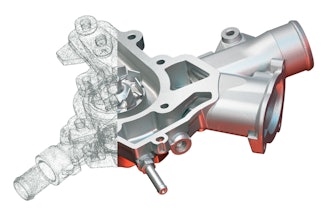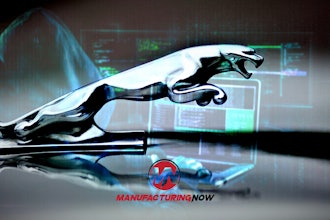
Nutanix, a leading enterprise cloud computing company, recently announced the findings of its Enterprise Cloud Index results for the manufacturing sector, measuring plans for adopting private, public and hybrid clouds. The report revealed that the manufacturing industry’s hybrid cloud usage and plans outpace the global average across industries.
The deployment of hybrid clouds in manufacturing and production companies has currently reached 19 percent penetration, slightly ahead of the global average. Moreover, manufacturers plan to more than double their hybrid cloud deployments to 45 percent penetration in two years; outpacing the global average by four percent.
The manufacturing industry is at an "innovation impasse", meaning manufacturers have a desire to innovate and drive transformation, but legacy IT systems have the potential to constrain their ability to do so. The opportunity for manufacturers to embrace digitization efforts can break the impasse, but executives must focus on new opportunities to create value outside of solely prioritizing traditional business operations.
Manufacturing organizations face the constant challenge of trade-offs: they are under pressure to meet current productivity and operational goals in an increasingly global and highly competitive marketplace, but they also need to invest in future growth. This challenge has created a demand for new technology solutions that can help balance the trade-off between current and future goals.
According to the company, IT leaders in manufacturing must avoid the beaten path of finding short-term fixes for increasing revenue; instead, they should look to long-term solutions that enable automation, enhanced use of data and improvements in customer experience. The Enterprise Cloud Index findings indicate that manufacturing leaders are aggressively adopting new technology to embrace modernization instead of getting left behind with legacy systems. The distributed cloud model offers a solution that delivers speed, flexibility, and localization, allowing manufacturers to improve efficiency without compromising quality.
While 91 percent of survey respondents reported hybrid cloud as the ideal IT model, today’s global average hybrid cloud penetration level is at 18.5 percent — the disparity due in part to challenges of transitioning to the hybrid cloud model. Manufacturing industries reported barriers to adopting hybrid cloud that mirrored global roadblocks, including limitations in application mobility, data security/compliance, performance, management and a shortage of IT talent. Compared to other industries, manufacturers reported greater IT talent deficits in AI/ML, hybrid cloud, blockchain, and edge computing/IoT.
Other key findings of the report include:
- 43 percent of manufacturers surveyed are currently using a traditional data center as their primary IT infrastructure, slightly outpacing the global average of 41 percent.
- However, manufacturers currently use a single public cloud service more often than any other industry. 20 percent of manufacturing companies reported using a single cloud service, compared to the global average of 12 percent — a testament to the fact that manufacturers are starting to turn to the cloud as a solution, given that they deal with legacy IT systems and cannot handle workloads on-premise.
- Manufacturers are also advancing the movement to private cloud: 56 percent of manufacturers surveyed said that they run enterprise applications in a private cloud, outpacing the global average by seven percent.
- Manufacturers are struggling to control cloud spend. One motivation for deploying hybrid clouds is enterprises’ need to gain control over their IT spend. Organizations that use public cloud spend 26 percent of their annual IT budget on public cloud, with this percentage predicted to increase to 35 percent in two years’ time. Most notable, however, is that 36 percent of organizations using public clouds said their spending has exceeded their budgets.
- Manufacturers chose security and compliance slightly more often than companies in other industries as the top factor in deciding where to run workloads: while 31 percent of respondents across all industries and geographies named security and compliance as the number one decision criterion, 34 percent of manufacturing organizations chose security and compliance as the top factor.
The bullish outlook for hybrid cloud adoption globally and across industries is reflective of an IT landscape growing increasingly automated and flexible enough that enterprises have the choice to buy, build, or rent their IT infrastructure resources based on fast transforming application requirements.






















